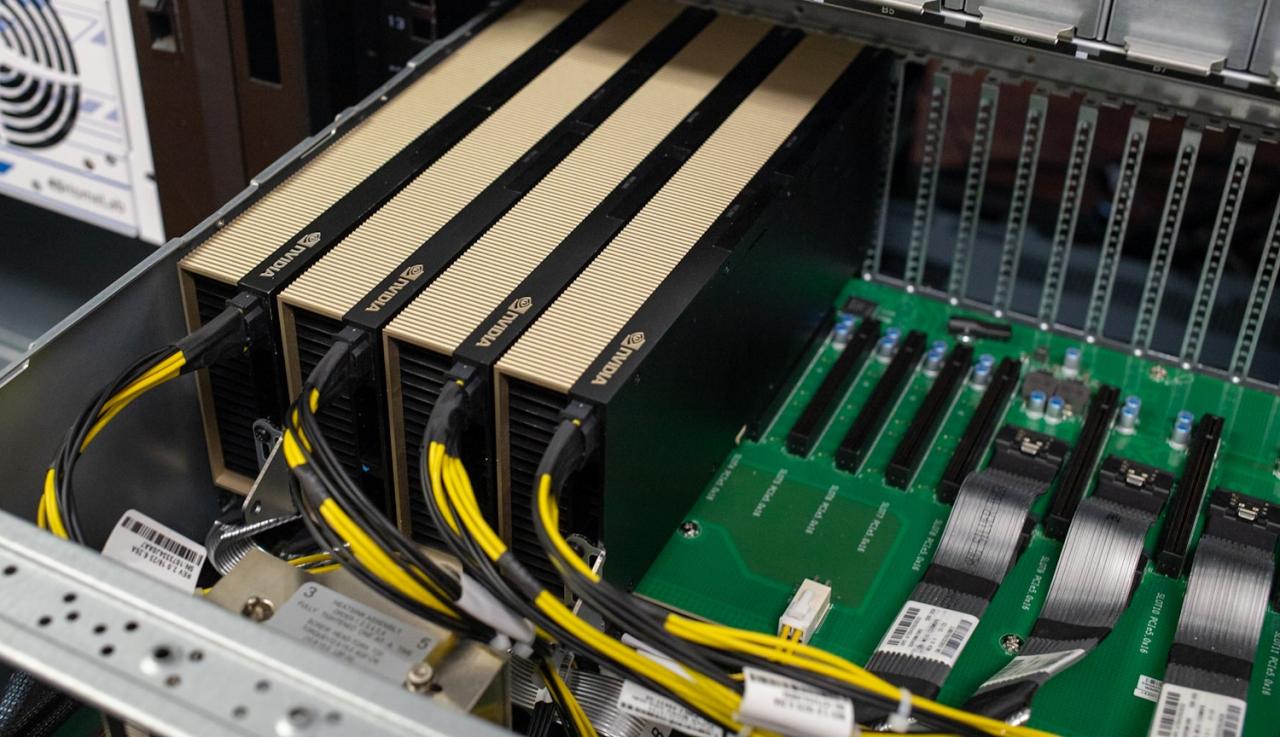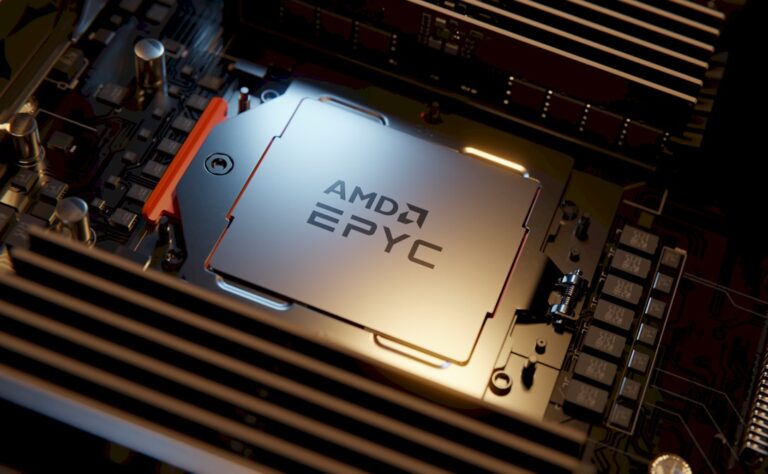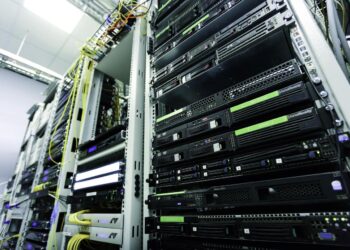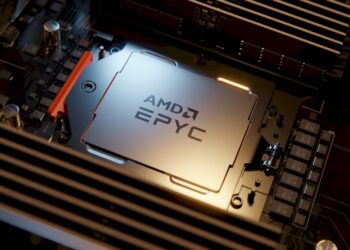For decades, the enterprise server market was largely dominated by a single player, with limited competition pushing the boundaries of innovation. However, in recent years, a seismic shift has occurred, spearheaded by AMD (Advanced Micro Devices). The narrative of an AMD server chip revolution is not an exaggeration; it’s a testament to a remarkable comeback story driven by relentless engineering, strategic vision, and a deep understanding of what modern data centers and cloud environments truly need. AMD’s EPYC processors have fundamentally reshaped the server landscape, offering compelling alternatives that deliver exceptional performance, efficiency, and features, forcing the industry to accelerate its pace of innovation.
The Stagnation and the Catalyst for Change

For a significant period, the server processor market experienced relatively incremental advancements. While performance steadily improved, the pace was often dictated by a lack of substantial competition. This allowed for less aggressive innovation and, arguably, higher pricing. However, AMD’s re-entry into the server market with its entirely new Zen architecture and the subsequent launch of the first-generation EPYC processors (codenamed “Naples”) served as the catalyst for change.
The AMD server chip revolution didn’t happen overnight. It was the result of years of dedicated research and development, focusing on architectural design that prioritized core count, memory bandwidth, and PCIe connectivity – features that were becoming increasingly critical for emerging workloads like virtualization, cloud computing, big data analytics, and artificial intelligence. This strategic focus, coupled with a highly competitive value proposition, allowed AMD to not only challenge the established order but also to ignite a new era of innovation in server technology, benefiting the entire industry.
Pillars of the AMD Server Chip Revolution
AMD’s success in the server market is built upon several strategic and technical pillars that differentiate its EPYC processors.
A. Zen Architecture
The core of AMD’s server chip revolution is its Zen microarchitecture. This was a complete redesign from the ground up, moving away from previous architectural limitations and focusing on delivering significant improvements in Instruction Per Cycle (IPC), core count, and overall efficiency.
- Modular Design (Chiplets): A key innovation in Zen is the “chiplet” design, initially implemented with multiple Core Complex Dies (CCDs) connected by the Infinity Fabric. This modular approach allows AMD to scale core counts efficiently and cost-effectively by adding more chiplets to a single package, without needing to design a monolithic, extremely complex large die. This contrasts with traditional monolithic die designs.
- High Core Counts: From its first generation, EPYC processors have offered significantly higher core counts compared to competitors at comparable price points. This is crucial for highly parallel workloads like virtualization, containerization, and cloud-native applications, allowing more virtual machines or containers to run on a single physical CPU.
- Improved IPC (Instructions Per Cycle): Each generation of Zen (Zen 2 “Rome”, Zen 3 “Milan”, Zen 4 “Genoa”) has brought substantial improvements in IPC, meaning each core can do more work per clock cycle, boosting single-threaded and multi-threaded performance.
- Enhanced Cache Structure: Larger and more efficient cache hierarchies reduce memory latency, leading to faster data access for the cores.
B. Memory Bandwidth and PCIe Lane Leadership
For data-intensive and I/O-heavy workloads, ample memory bandwidth and PCIe connectivity are critical. AMD’s EPYC processors have consistently led the industry in these areas.
- High Memory Channels: EPYC processors typically offer more memory channels (e.g., 8 or 12 channels for current generations) compared to competing server CPUs. This translates directly into higher memory bandwidth, which is essential for databases, analytics, and in-memory computing.
- Generous PCIe Lanes: AMD EPYC processors provide a significantly higher number of PCIe lanes (e.g., 128 or more, directly from the CPU) compared to competitors. This allows for direct, high-bandwidth connections to a large number of NVMe SSDs, network adapters (100/200/400 GbE), and AI accelerators (GPUs) without needing external PCIe switches, reducing latency and complexity.
- PCIe 4.0 and 5.0 Adoption: AMD was an early adopter of PCIe 4.0 and has been leading the transition to PCIe 5.0, doubling the data transfer rate per lane with each generation. This is crucial for feeding data to modern, high-performance NVMe storage and powerful AI accelerators.
- Advantages: Eliminates I/O bottlenecks, enables denser storage configurations, and supports more high-speed network interfaces and AI accelerators within a single server, making EPYC ideal for data-intensive and highly accelerated workloads.
C. Power Efficiency and TCO Advantage
While delivering high performance, AMD has also focused heavily on power efficiency, contributing to a lower Total Cost of Ownership (TCO) for data centers.
- Performance Per Watt: AMD’s architecture often delivers a superior performance-per-watt ratio, meaning you get more computational power for each unit of energy consumed. This directly translates into lower electricity bills for data centers.
- Lower Cooling Requirements: More efficient power consumption means less heat generated, which can reduce the burden on cooling systems and contribute to overall data center energy savings.
- Socket Consolidation: With higher core counts and more features per socket, AMD EPYC processors can often replace two-socket competitor configurations with a single-socket EPYC server. This reduces hardware costs (fewer CPUs, less RAM, fewer licenses) and power consumption, providing a significant TCO advantage.
- Optimized Workload Performance: For many virtualized, cloud, and data-intensive workloads, EPYC’s architectural strengths can lead to higher VM density per server, faster database queries, and quicker data analytics processing, further improving operational efficiency and reducing costs.
D. Security Features (Infinity Guard)
Security is paramount in the server market, and AMD has integrated robust security features into its EPYC processors.
- AMD Infinity Guard: This suite of advanced security features is built into the EPYC processor silicon. It includes a dedicated on-die security processor that acts as a hardware root of trust.
- Secure Boot: Ensures that only cryptographically signed firmware is executed during the boot process, protecting against firmware-level attacks.
- Secure Memory Encryption (SME): Encrypts the entire physical memory of the server, protecting data in RAM from snooping or cold boot attacks, even if the server is physically compromised.
- Secure Encrypted Virtualization (SEV): A game-changer for virtualization and cloud environments. SEV encrypts each virtual machine’s memory, isolating VMs from each other and from the hypervisor. This means even if the hypervisor is compromised, the data within the VMs remains protected, offering a new level of confidentiality for multi-tenant cloud environments.
- Secure Nested Paging (SNP): An extension of SEV, SNP provides additional protection for virtual machines, making it harder for a malicious hypervisor or other VMs to access their memory.
- Advantages: Enhances data security for sensitive workloads, provides greater isolation in virtualized and cloud environments, and helps meet stringent compliance requirements.
E. Ecosystem Support and Industry Adoption
AMD’s resurgence has been fueled by growing support from the broader IT ecosystem.
- Server OEM Adoption: All major server original equipment manufacturers (OEMs) – Dell, HPE, Lenovo, Supermicro, Cisco, and others – now offer extensive portfolios of AMD EPYC-powered servers, giving customers broad choice.
- Cloud Service Provider Integration: Hyperscale cloud providers like Microsoft Azure, Google Cloud, Oracle Cloud Infrastructure (OCI), and AWS offer EPYC-based instances, recognizing the demand for AMD’s performance and efficiency.
- Software Vendor Optimization: Major software vendors (e.g., VMware, Microsoft, Red Hat, SAP, Oracle) have optimized their software stacks to take full advantage of EPYC’s architecture, including its high core counts, memory bandwidth, and security features.
- Open Source Community: Strong support from the open-source community, particularly for Linux distributions and cloud-native technologies, ensures broad compatibility and continuous development.
The Impact of the AMD Server Chip Revolution

AMD’s re-entry has had a profound and positive impact on the entire server market, benefiting customers across various segments.
F. Increased Competition and Innovation
- Accelerated Innovation: AMD’s competitive pressure has forced its primary rival to innovate more aggressively, leading to faster generational improvements in performance, efficiency, and features across the entire server processor market.
- Better Value for Customers: Increased competition has resulted in better performance-per-dollar and more compelling features for customers, driving down overall TCO.
- More Choice: Customers now have a viable, high-performance alternative, allowing them to select the best server processor based on their specific workload needs, budget, and preference.
G. Enhanced Virtualization and Cloud Density
- Higher VM Density: EPYC’s high core counts and abundant memory channels allow for more virtual machines (VMs) or containers to be consolidated onto a single physical server. This reduces the number of physical servers required, lowering hardware costs, power consumption, and cooling demands.
- Improved Cloud Efficiency: For cloud providers, this translates into higher tenant density per server, improving their infrastructure utilization and profitability.
- Secure Multi-Tenancy: Features like SEV provide enhanced security for multi-tenant cloud environments, protecting customer workloads from each other and the cloud provider’s underlying infrastructure.
H. Acceleration of AI and HPC Workloads
- GPU Pairing: EPYC processors, with their high PCIe lane count and bandwidth, are excellent companions for NVIDIA and AMD GPUs, providing ample data throughput for AI training and HPC simulations.
- Data Bottleneck Relief: For data-intensive AI and HPC workloads, the superior memory bandwidth of EPYC helps ensure that the powerful GPUs are constantly fed with data, preventing performance bottlenecks.
- Optimized HPC Clusters: Many modern supercomputers and HPC clusters now leverage AMD EPYC CPUs, often combined with high-performance GPUs, to achieve world-record levels of computational power.
I. Lower Total Cost of Ownership (TCO)
- Reduced Hardware Costs: The ability to achieve desired performance with fewer physical servers (due to high core counts and single-socket optimization) directly lowers upfront hardware costs.
- Lower Energy Bills: Superior performance per watt translates into significant savings on electricity consumption for both compute and cooling.
- Reduced Software Licensing: Many enterprise software licenses are based on physical cores or sockets. AMD’s higher core counts per socket can mean fewer licenses are required for the same number of logical cores, leading to substantial software cost savings.
- Operational Efficiency: Simplified management due to fewer servers and enhanced security features contribute to lower operational expenses.
Challenges and Future Outlook
Despite its impressive resurgence, AMD continues to navigate a dynamic and challenging server market.
J. Sustaining Innovation Pace
- Continued R&D: AMD must sustain its aggressive pace of innovation with new Zen generations to maintain its competitive edge against a formidable rival.
- Architectural Challenges: As core counts grow, challenges related to latency, power delivery, and thermal management within the chiplet design become more complex.
K. Supply Chain Resilience
- Manufacturing Dependencies: Like all chip manufacturers, AMD relies on foundries for chip production, making it susceptible to global supply chain disruptions and capacity constraints.
- Yields: Producing complex, high-core-count server chips with good yields is a continuous engineering challenge.
L. Perception and Mindshare
- Historical Perception: Despite its current success, AMD still battles a historical perception as an underdog or secondary choice for some enterprise customers. Building sustained trust and mindshare takes time.
- Enterprise Ecosystem Depth: While growing, AMD’s enterprise ecosystem (e.g., services, specialized tools) might still be perceived as less mature in some areas compared to its long-established competitor.
M. Evolving Workload Demands
- Specialized Accelerators: The rise of highly specialized AI accelerators and custom silicon from cloud providers could present new competitive dynamics for specific AI workloads. AMD is addressing this by also developing its own AI accelerators (e.g., Instinct MI series GPUs).
- New Computing Paradigms: The long-term implications of quantum computing, neuromorphic computing, and advanced edge computing will require continuous adaptation of server chip designs.
N. Sustainability and Energy Consumption
- Absolute Power: While performance per watt is excellent, the absolute power consumption of high-core-count processors can still be substantial. AMD must continue to drive down power envelopes for its highest-performance chips to meet increasing sustainability demands.
Conclusion
The AMD server chip revolution is a profound and impactful story in the history of computing. By focusing on a fundamentally new architecture (Zen and chiplets), leading with high core counts, delivering unmatched memory bandwidth and PCIe connectivity, baking in robust security features (Infinity Guard), and providing a compelling TCO advantage, AMD has not only disrupted the server market but has also elevated the entire industry.
This competitive pressure has spurred innovation across the board, ultimately benefiting data center operators and cloud providers with more powerful, efficient, and secure server options. As the demands of AI, cloud computing, and big data continue their exponential growth, AMD’s commitment to continuous innovation in its EPYC processor line positions it as an enduring and central force. The revolution initiated by AMD is far from over; it’s an ongoing evolution that will continue to shape the future of servers and redefine the boundaries of enterprise computing.









